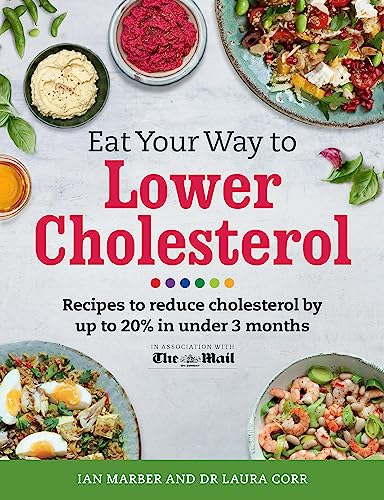Cholesterol is similar to fat which is in the bloodstream and every cell of our bodies. It is crucial for effective bodily functioning as it assists in the production of cell membranes and certain hormones as well as in the digestion of fat.
Should you have too much cholesterol, it can lead to blockages in your body, leading to heart attacks and strokes.
A cholesterol measurement gives you two separate substances: LDL, low-density lipoprotein, commonly called “bad” cholesterol, and HDL, high-density lipoprotein, commonly called “good” cholesterol.
A high level of LDL can clog your arteries, with high levels of HDL lowering your risk of heart attack.
The desirable overall cholesterol level is less than 200. Relatively high risk levels are deemed to be between 200 and 239, with any level above 240 being interpreted as high.
An LDL of less than 100 is optimal, with an LDL of between 100 and 129 being considered near optimal or good. A measure of 130-159 is relatively high, with 160 -189 being high and anything near 190 being very high. HDL normally ranges from 40 to 50.
Diet Tips to Lower Cholesterol
The most crucial fact you need to know when you are contemplating a diet to lower cholesterol is that cholesterol comes from animals. So should you eat meat, drink milk, eat eggs or cheese, you are getting an intake of cholesterol from the food you eat.
All cholesterol does not come from food. The body can make up to 75% of the cholesterol which ends up in the bloodstream. Hence, a diet to lower cholesterol is not in all cases adequate to reduce its presence.
The kinds of fats you eat can impact on cholesterol levels, even though the foods themselves do not contain it, according to the Harvard School of Public Health.
Monounsaturated fat, which is in olive oil as well as most nuts, lowers LDL and increases HDL. Polyunsaturated fat, found in corn, soybean oil and fish, also lowers LDL and increases HDL.
Saturated fat, to be found in whole milk dairy products, like red meat, coconuts and related coconut products, raises LDL and HDL, with trans fats, to be found in multiple fried foods, margarines and all foods containing partially hydrogenated oils, increases LDL levels.
A simple way to work out what you are eating is that saturated fat is solid at room temperature. Polyunsaturated fat is liquid when at room temperature. As lots of fatty products are kept in the fridge, you are not likely to see them at room temperature, so it makes good sense to read the label.
Diet Plans for Lowering Cholesterol
A diet known to assist in the lowering of cholesterol is the Mediterranean diet.
This diet is high in the dietary intake of olive oil, fish, fresh fruit and vegetables. This diet restricts red meat, which is ideal should you be seeking a diet to lower cholesterol.
Some people go on a low fat diet to reduce cholesterol.
Diets, such as the Dean Ornish Diet and the Pritkin Diet are appropriate for those with high cholesterol. They have both successfully reduced plaque and reversed heart damage.
Diet.co.uk’s Ten Step Diet Plan to Reduce Cholesterol
A great benchmark for those attempting to cut cholesterol levels is to get 300 milligrams of it on a daily basis, and no more, from food sources.
Saturated fat ought to constitute less than 10% of the calories you eat, and you should do all you can to eliminate trans fats from your diet.
There are some diet tips from Diet.co.uk that you can follow to help you to reduce your cholesterol levels, including:
- Eating various nutrient high foods
- Eating lots of fruits and vegetables
- Opting for whole grain products as opposed to refined carbohydrates
- Having fish a minimum of twice a week
- Restricting your intake of saturated fat, trans fat as well as cholesterol
- Selecting lean meats and poultry
- Opting for no-fat or low-fat dairy products
- Reducing your intake of extra salt
- Reading labels to assist you to follow the advice
Some other superfoods for the reduction of cholesterol are:
- Oat bran
- Oatmeal
- Almonds, walnuts, as well as other nuts
- Foods minus trans fat









